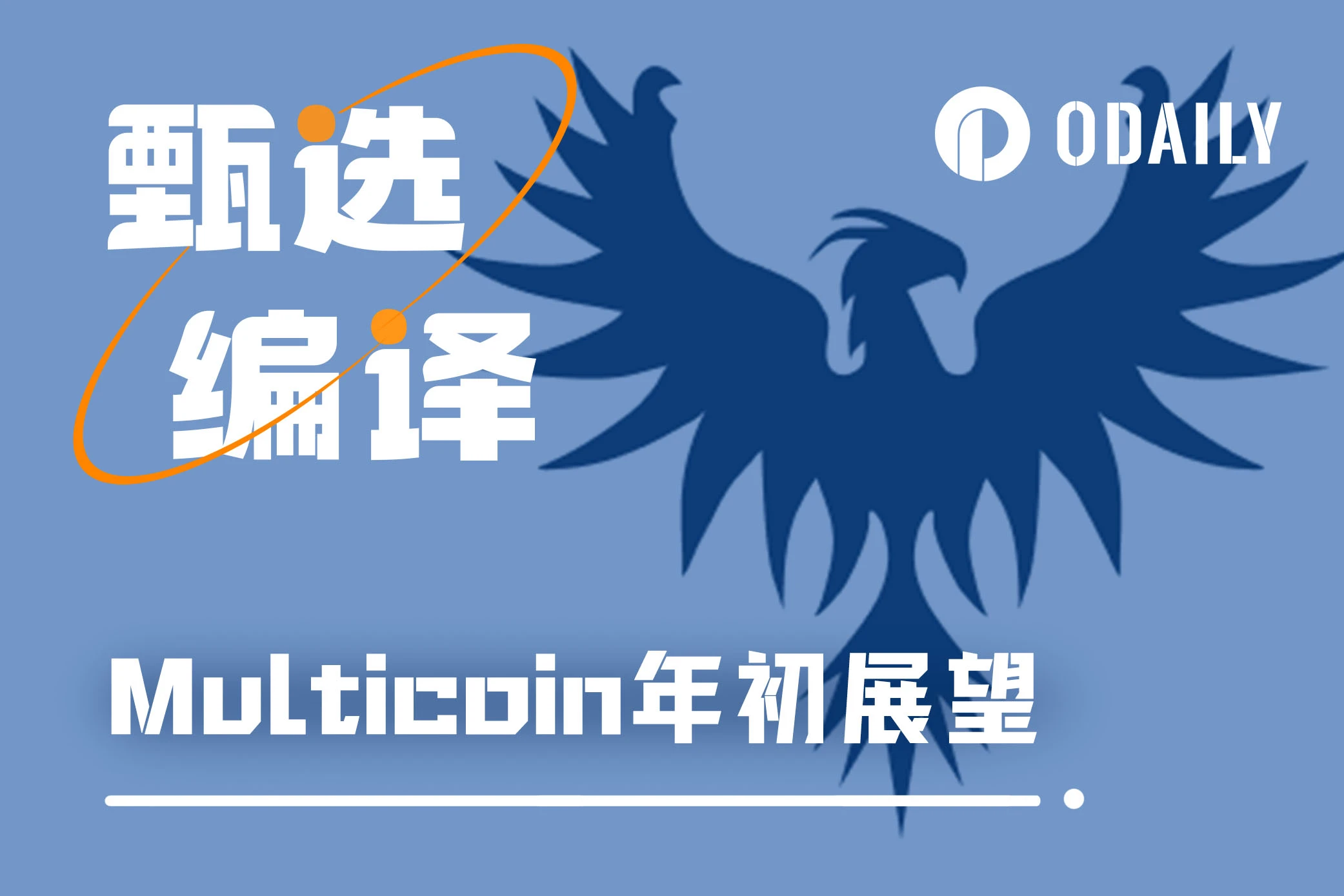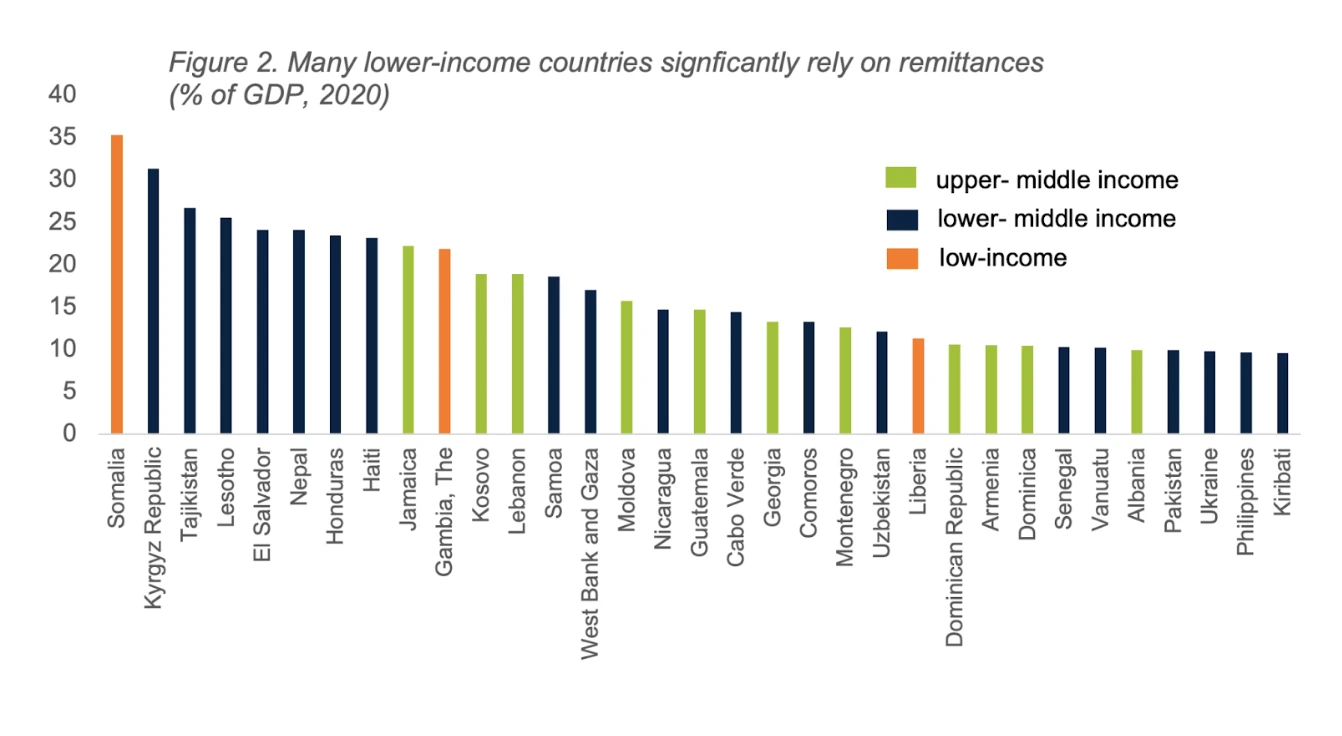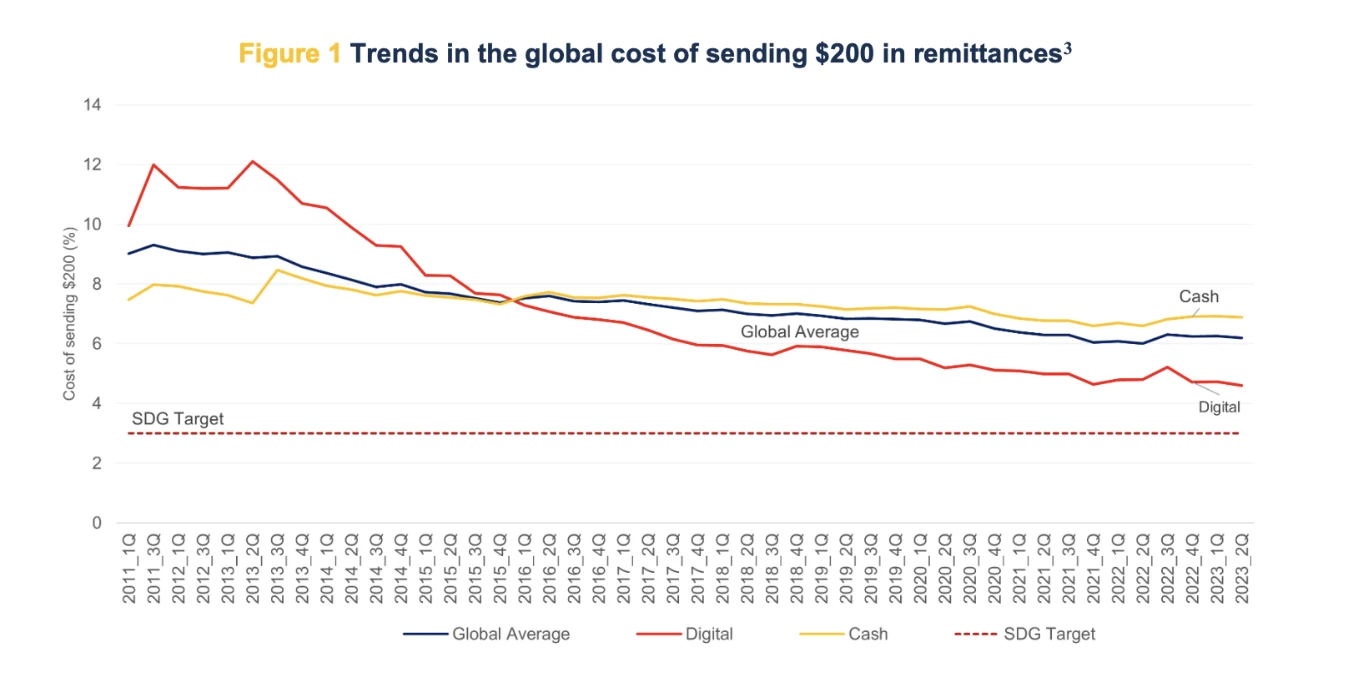The original text comes from Multicoin Capitals What Multicoin Is Excited About For 2024 》, compiled by Odaily jk.

At the end of each year, we get together to discuss some of the big changes we expect in the year ahead. This is the first time we are publishing these ideas. Feel free to contact any of us to discuss these ideas further.
Shayon Sengupta: An Attention Theory of Value
Exchanges are used to trade things that are easy to price—stocks, commodities, interest rates, etc. There are standard measures of these assets (e.g., the discounted future cash flow (DCF) function of a stock; the price of barrels of oil at the border; the willingness to pay for a future convertible $1.05). This is what price discovery in liquid markets means.
However, there is another category of goods where price discovery revolves purely around attention. Sneakers, art, sports collectibles, vintage furniture – these are inherently less liquid than stocks or commodities, and their value comes entirely from social consensus, not the DCF model.
In recent years, due in large part to the Internet, the attention theory of value has penetrated traditional markets. TSLA, GME, AMC, DOGE, and CryptoKitties have all experienced meaningful price discovery under this model. The primary pricing mechanism for these assets used to be cash flows and liquidation prices, but now the primary mechanism is derived from the amount of attention they receive.
In the attention theory of value, cryptocurrencies play two important roles: the first is the ability to create new assets quickly, and the second is the ability to trade them. If attention is the core pricing factor, then all cryptocurrencies can do is provide an infinite canvas for issuing and trading assets that track attention. Reaching the broader model of “financialized attention” requires the two most important properties of cryptocurrencies to reach their natural end state: permissionless and composability.
No permission required: anyone can issue any type of asset
Composability: Anyone can trade these assets anywhere
This experimental design space:
Increased “touch area” for new asset issuance (i.e., historical creator tokens, prediction market LP positions, meme coins)
Embed issuance and trading into new venues (i.e., historical messaging bots like bonkbot or bananagun, leaderboards like friend.tech, in-game marketplaces)
Promote coordination among asset holders (i.e. historical crowdfunding to purchase copies of the Constitution to establish radio coverage for carrier offloading)
In the short term, this means the next big exchange wont look like an exchange. It will look like a live streaming platform where creators and viewers can place bets together, or a group chat where friends and community can instantly launch a crowdfunding campaign to raise millions of dollars to build a cyber nation, or It is a forum similar to Stack Exchange. Top contributors can not only obtain platform-specific status points, but also obtain substantial financial rewards.
In 2024, we will see entrepreneurs experimenting on these three broad models. We will see the emergence of the first “non-exchange” exchanges that will handle both liquid and illiquid assets. These exchanges will climb to the top of the charts in terms of trading volume and move on from where Wall Street was unwilling to bet.
Vishal Kankani: A social network for NFT collectors
In 2024, I’m excited about collectible NFTs, more people adding to their collections, and social experiences for collectors.
Collecting has a long historical origin, from the amassing of unique treasures by monarchs in the Egyptian and Chinese civilizations to the treasures of Renaissance Europe. Essentially, the museum evolved from these private collections.
From a psychological perspective, aside from being a speculative opportunity, collecting is a means of self-expression. In some circles, collectibles have become status symbols, intertwining the act of collecting with personal identity and demonstrating commitment, expertise and knowledge. The internet has amplified this behavior, connecting previously isolated enthusiasts and promoting a new sense of belonging within their respective tribes.
Despite this progress, collectorsSeveral obstacles remain:
Fraud related to authenticity and provenance
Transactions and fungibility
Security, damage and loss
Space and storage issues
Blockchain, by definition, significantly reduces the above barriers and attracts more people to collect. Blockchain is particularly appealing to younger generations who already enjoy collecting digital items—think Pokemon Go, virtual sneakers, and in-game skins. These collections are the precursors to natively digital collectibles that live on public blockchains.
Even as digital collectibles move from private databases to public blockchains, certain behavioral patterns of collectors will remain the same: the desire to display their collections, easily exchange collections, explore, connect and interact with their tribe . These behaviors will lay the foundation for the rise of social experiences based on ownership graphs.
Spencer Applebaum: Stablecoin-powered transfers in emerging markets
I became interested in cryptocurrencies after interning at Bitspark, one of the first companies to use BTC as a remittance route, mainly in Southeast Asia and Africa. Cryptocurrency-powered cross-border payments are one of the most exciting applications I’ve seen since discovering cryptocurrencies.
In some low-income countries, the remittances industry is one of the main drivers of GDP and is how many economies stay afloat:

Remittance trends source: Data based on World Bank Development Indicators
Historically, the challenge with remittances has been that they are expensive and only a few fiat currencies are exchangeable and tradable outside of their country of origin (e.g. USD, EUR, JPY, GBP), making many lanes slow and inaccessible.According to the World Bank, the cost of sending remittances averages about 6.2%, but for long-tail exotic channels, this spread intuitively increases significantly. For example, the cost of sending money from South Africa to China is over 25%.
Against this backdrop, I’m excited about the opportunities that will emerge in 2024 for consumer-focused remittance apps and B2B SaaS companies targeting physical money transfer operators (MTOs)—especially those that are traditionally inaccessible and/or MTO using stablecoins in expensive channels.
These products 1) exchange local currency ABC to USDC/USDT via a local payment method on a P2P basis (such as oRamp or El Dorado), 2) send USDC to another country, and 3) through another broker or liquidity provider Or, use familiar domestic payment methods to keep USDC or convert it to local currency.
Over the past 12 years, digital payments have had a profound impact on global remittances:

Reduction in remittance costs Source: World Bank Global Quarterly Report on Remittance Prices
Stablecoins will accelerate this trend and further reduce the cost of remittances, especially in long-tail channels that have historically been slow and expensive. With the rapid adoption of stablecoins in 2023, 2024 will be the year of stablecoin remittances.
Matt Shapiro: Cryptocurrencies move from being a product to driving products
By 2024, we will see a major shift in cryptocurrencies from being the product itself to driving the product. Early signs of this trend are already emerging, and I believe new opportunities are emerging everywhere.
Last year, cryptocurrencies lit up new markets that were historically impossible or highly inefficient.Hivemapper creates an entirely new map that views a location 24 to 100 times more often than Google Street View and maps nearly 10% of the planet in less than a year — incentivized in a scalable way using cryptography Contributions without permission.Amid the global GPU shortage, Render Network has created an entirely new market for GPU supply—an area we believe will continue to face supply and demand imbalances for years to come. Helium Mobile is seeking to fundamentally change the cost structure of the telecommunications industry by relying on user-owned infrastructure and devices powered by encryption technology.
Nubank, one of the largest neobanks with over 80 million customers, is diving into the cryptocurrency space by launching Nucoin as a loyalty reward. Starbucks is diving deeper into the cryptocurrency space with its Odyssey program, an offshoot of its existing top-tier rewards program. Blackbird is using cryptocurrency rewards as an entry point into restaurants (which could be a precursor to a strong payments business, adding extra profit to restaurants bottom lines).
BAXUS is using cryptocurrency to light up a market for trading and investing in whiskey and other premium spirits, opening the market to a new group of participants. oRamp is using cryptocurrencies to light up a new market for local and regional FX, enabling tighter spreads and lower costs for clients.
All of these examples are different, but at their core they are the same: they are using cryptocurrencies to power products with significant economic results. In some cases, like Starbucks, Nucoin, and Blackbird, cryptocurrencies are mostly hidden, lurking under the hood. In other cases, like Hivemapper and Render, the cryptocurrency is closely tied to the product, highly visible, and a key part of the product itself. The design space here is vast, and the infrastructure built over the past 5 years has paved the way for cryptocurrencies to drive everyday use cases. By 2024, experimentation in this area will explode.
Eli Qian: Data on the chain
I predict that by 2024, the amount of on-chain data will grow by orders of magnitude. As new users join, the use cases and capabilities of decentralized applications (dApps) and protocols will grow. Decentralized social protocols will be particularly data-rich—people do more things and generate more data on social products than on financial products.
What will we do with this explosive growth of data? In the past, on-chain data was seen as an avenue for advertising and personalization. However, Im eager to see teams take a more principles-based approach and acknowledge that contextualizing on-chain data is not just a luxury but a necessity when building social products.
Currently, our on-chain social data and identities are built in a unified graph (e.g. Farcaster), which makes it difficult to build social products for different social environments. People are multifaceted. We live in a wide range of social environments. Our behaviors and needs vary depending on the environment. We use Facebook, Twitter, LinkedIn, and Snapchat for different reasons—social graphs create specific contexts and experiences on each platform.
The launch of Threads provides a case study. There are many reasons why Threads hasn’t replaced Twitter, but one of them is the ambiguity of the social landscape.Threads’ social graph is imported from Instagram – a social network primarily about real-life relationships. But the medium of Threads, the way users interact, is borrowed from Twitter, an online-first, often anonymous social environment. Users are unclear about how they should act because there is a mismatch between the product and the environment.
By 2024, the edges and nodes of social graphs will be cut and categorized to form more specific and relevant contexts. In-protocol solutions already exist (like channels on Farcaster), but I expect off-protocol solutions will emerge as developers start demanding more relevant data to build the products and social experiences they want. Im excited about the next wave of raw data and developer infrastructure that will enable a new generation of social applications.
Tushar Jain: A new form of token distribution
Every bull run in cryptocurrencies is triggered by a new method of token distribution. For example:
- PoW chain diffusion- 2013/2014
- ICOs - 2017
- IEOs - 2019
- Liquidity Mining- 2020
- NFT Minting - 2021
Two new token distribution mechanisms developed during the recent bear market could become the fuel that ignites a new bull market:
- DePIN - rewards people who help build productive, capital assets (e.g. Helium, Hivemapper, Render).
- Points - Incentivize people to use the product until all token mechanisms are worked out. Launching a token requires a lot of work, and changing the economic model once the token is live is even more difficult. Points have no units, no maximum supply, and because they are non-transferable, there is less regulatory risk. Points provide incentives ahead of the PMF (Product Market Fit) sandbox stage.
New forms of token distribution are a powerful way to attract new users into the crypto ecosystem. I think the next surge in users will come from those who acquire crypto assets instead of buying them. Both DePIN and points offer novel ways to gift crypto assets to new users who have never owned a crypto wallet.
Kyle Samani: UI layer composability and client-side zero-knowledge proofs (ZK)
UI layer composability
In my talk at the 2021 Multicoin Summit, I discussed the concept of composability. At that time, I was more focused on on-chain atomic composability. Over the past few years, however, Ive placed less emphasis on on-chain atomic compositionality (which is why I changed the name on X from Compositional Kyle to Integrated Kyle). Lately, a type of composability that Ive been increasingly interested in is permissionless UI layer composability. In 2023, we saw the first major breakthrough in UI layer composability: Unibot. Unibot is an on-chain terminal and DEX bot on Telegram. Where before people learned information somewhere on the internet (X, Reddit, News, Bloomberg, Telegram chat, etc.) and then navigated to a separate UI to trade (e.g. Drift, Binance, Coinbase, etc.), Unibot brings trading to To Telegram where people are already hanging out, socializing and exchanging messages.
There is a huge opportunity in 2024 to bring trading activity to many other environments on the web beyond Telegram.
Building on this idea, Id like to see more composability at the UI layer, not just of the asset ledger, but also of social products, most notably Farcaster. Farcasters dream is audacious: a single event stream with each event signed by an individual, with numerous UIs reading and writing to that event stream.
We usually talk about X as if X provides a unique product experience for different use cases: cryptoTwitter, fintwit, sportsTwitter, politicalTwitter, etc. Building a Farcaster client to realize this vision in principle is a real opportunity. This design space is open for people to take advantage of in 2024.
Client Zero Knowledge Proof (ZK)
Over the past few years, much of the discussion around zero-knowledge (zk) has been about using zero-knowledge convolutions and zk coprocessors to extend the asset ledger. However, I think the most interesting design space in zk is client-side privacy. I recently learned about two client zk configurations that I find very attractive:
Zk.me, as the name suggests, is a zk proof about yourself system, especially in the context of KYC and AML compliance. It’s hard for me to imagine DeFi growing another 10x without stricter on-chain KYC. Under this assumption, I would prefer users not to leak their data, and zk-proof will be the basis for realizing this vision.
Brave Boomerang — Traditionally, ad exchanges have run on centralized servers. This is true for Google, Facebook, and every other online ad exchange.Brave is disrupting the ad exchange model. Users run the ad exchange locally on their device and submit proof that they are running the ad exchange correctly to the blockchain. This model ensures that no personally identifiable information (PII) is leaked and still provides advertisers with the targeting precision they seek (zk has proven that ads shown for Honda cars are shown to 16-year-olds rather than 6-year-olds people).
As these two examples illustrate, the greatest opportunity to reimagine trust on the Internet and build new business models using ZK lies on the client side.









